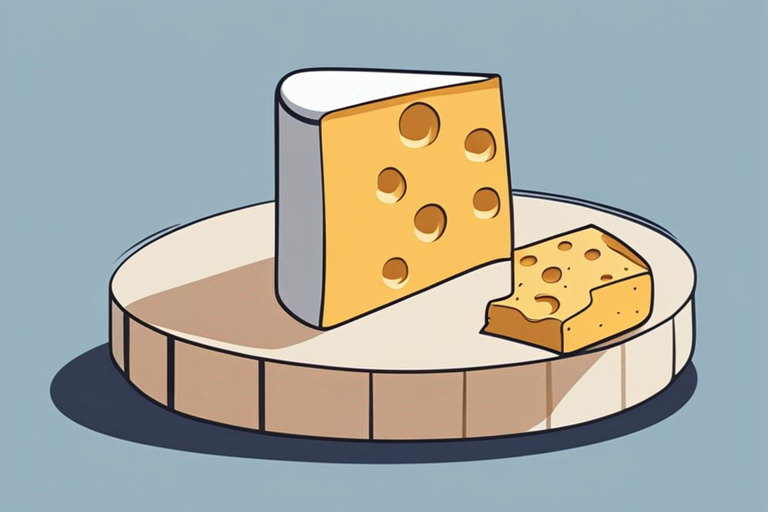
How Long Is Sliced Cheese Good for After the Expiration Date?
Get Your Free Food Safety Cheat Sheet
30 most common foods with instant answers. Print it and stick it on your fridge—completely free!
How Long Is Sliced Cheese Good for After the Expiration Date?
When it comes to food safety, understanding expiration dates and how long certain foods can last beyond those dates is crucial. Sliced cheese is a popular dairy product that many households have stocked in their refrigerators. But what happens when the expiration date has passed? Is it still safe to consume sliced cheese after that date? In this blog post, we will delve into the topic of how long sliced cheese is good for after the expiration date, providing you with practical tips and safety information.
Understanding Expiration Dates on Sliced Cheese
Before we discuss how long sliced cheese can last beyond the expiration date, it's important to understand what expiration dates actually mean. The date printed on the packaging of sliced cheese is typically labeled as the "sell by" or "use by" date. These dates are provided by manufacturers to indicate the peak quality and freshness of the product. It is not necessarily a safety date but rather a guideline for when the cheese is at its best flavor and texture.
Factors Affecting the Shelf Life of Sliced Cheese
Several factors can impact the shelf life of sliced cheese, including:
- Storage Conditions: Proper storage is essential for maintaining the quality and safety of sliced cheese. Keep it refrigerated at all times.
- Packaging: Cheese that is tightly sealed in its original packaging will last longer than cheese that has been exposed to air.
- Temperature: Sliced cheese should be stored at a consistent temperature of 40°F (4°C) or below.
- Contamination: Cross-contamination with other foods can lead to spoilage of sliced cheese.
How Long Can Sliced Cheese Last After the Expiration Date?
While it is always recommended to consume sliced cheese before the expiration date for the best quality, the good news is that sliced cheese can often be safe to eat for some time after that date, as long as it has been properly stored. Here are some guidelines to keep in mind:
Hard Cheese (Cheddar, Swiss, etc.)
- Unopened: Hard cheeses like cheddar or Swiss can last 3-4 weeks past the expiration date if stored properly.
- Opened: Once opened, hard cheese can still be safe to eat for 1-2 weeks beyond the expiration date if stored in an airtight container.
Soft Cheese (Brie, Camembert, etc.)
- Unopened: Soft cheeses generally have a shorter shelf life and should be consumed within 1-2 weeks after the expiration date.
- Opened: Once opened, soft cheese should be consumed within 3-5 days for optimal freshness.
Pre-sliced Cheese
- Unopened: Pre-sliced cheese can last 1-2 weeks past the expiration date if stored correctly.
- Opened: Once opened, pre-sliced cheese should be consumed within 3-5 days.
Signs that Sliced Cheese Has Gone Bad
It's important to be able to recognize the signs that sliced cheese has gone bad to avoid consuming spoiled food. Here are some indicators that your sliced cheese may have spoiled:
- Mold: Visible mold growth on the cheese, especially if it has a fuzzy texture.
- Off Odor: If the cheese has a sour or unpleasant smell, it is likely spoiled.
- Texture Changes: Sliced cheese that has become slimy or overly dry is no longer safe to eat.
Conclusion
In conclusion, sliced cheese can often be safe to consume after the expiration date, as long as it has been stored properly and shows no signs of spoilage. By understanding the factors that affect the shelf life of sliced cheese and knowing the signs of spoilage, you can make informed decisions about whether to keep or discard expired cheese. Remember to always prioritize food safety and quality when it comes to consuming dairy products like sliced cheese.

Authoritative Food Safety References
These agencies and university labs inform every tip and health precaution we publish.
USDA FoodKeeper – Cold Storage Guidelines
Official refrigerator, freezer, and pantry timelines maintained by the U.S. Department of Agriculture.
Visit USDA FoodKeeperFDA Produce Safety Rule & Grower Guidance
Field-to-fridge handling practices that prevent contamination of fruits, vegetables, and leafy greens.
Visit FDA Produce SafetyCDC Foodborne Illness Prevention Hub
Surveillance-backed guidance on pathogens, symptoms, and steps to reduce foodborne illness risk.
Visit CDC Food SafetyUC Davis Postharvest Technology Center
University research detailing optimal storage atmospheres for produce after harvest.
Visit UC Davis PostharvestPenn State Extension – Home Food Preservation & Safety
Peer-reviewed extension bulletins on safe canning, chilling, and reheating practices.
Visit Penn State ExtensionCan I still eat sliced cheese after the expiration date?
How long does sliced cheese last in the refrigerator?
Can I freeze sliced cheese to extend its shelf life?
How can I tell if sliced cheese has gone bad?
Is it safe to eat sliced cheese that has been left out at room temperature?
Get Your Free Food Safety Cheat Sheet
30 most common foods with instant answers. Print it and stick it on your fridge—completely free! Want more? Upgrade to the complete guide with 70+ foods.
Scan your food directly and get instant safety info using our AI-powered camera feature.